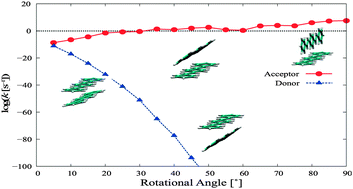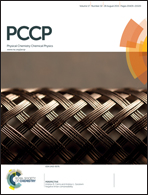Theoretical studies of molecular orientation and charge recombination in poly-paraphenylenevinylene light-emitting diodes†
Abstract
Poly-paraphenylenevinylene (PPV), a material used in organic light-emitting diodes (OLEDs), for which improving the efficiency is an important issue. In general, the molecular orientations of organic compounds in the crystal form are an essential factor determining electron and hole transfer, which are closely related to the efficiency of OLEDs. We have investigated the effects of the rotation of each molecule and the intermolecular distance in the dimer system of PPV, which consists of donor and acceptor molecules, on its charge-recombination process by performing constrained density functional calculations. Starting from the structure of the crystal, it was clarified that the rotation of the donor decreases the charge-recombination factor, to nearly zero, while that of the acceptor increases it to about 106 s−1. We found that this is caused by the repulsive interaction between the donor and acceptor molecules and the formation of a transport pathway resulting from the acceptor rotation.


 Please wait while we load your content...
Please wait while we load your content...